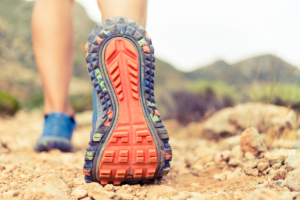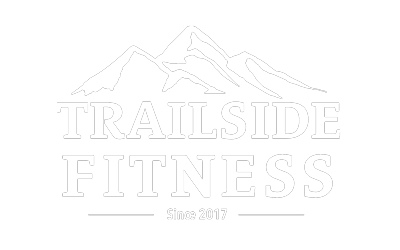Foot Numbness During A Thru Hike
Foot numbness during a thru hike is quite common. Excessive pack weight and footwear play a key role, and today, we’ll discuss the causes of foot numbness and ways you can reduce your risk.
What Causes Foot Numbness?
Numbness occurs when the Medial Plantar Nerve that runs under the ball of your foot suffers from too much compression. It generally affects the 1st, 2nd, and 3rd toes; when compressed or damaged, you feel numb or sensation changes.
Note that the nerve runs under the ball of your foot; this is your pivot point for each step forward. Even with trekking poles, this will bear most of your weight with each step.
Nerves are notoriously slow healers, and you may experience numbness for weeks to months post-trial.
Personal Experience
I was experiencing numbness on my right foot with Altra Lone Peak shoes and switched to Vasque shoes while hiking. The Vasque offered a thicker Vibram sole, and the problem was resolved in a few weeks while on the trail. I found the Lone Peak footbed too soft for me, and after a few hundred miles, I felt ready for a new pair.

The downside of the Vasque shoes was their weight. I switched back to Altra Timps to complete Washington and did not have any numbness. The Altra Timp offers a thicker sole and more support than the Lone Peaks.
My pack weight was rarely over 30 pounds for most of the trail, generally 17-27lbs. My leading cause stems from a nasty ankle sprain and bone bruise (from fly fishing!) months before we left for the PCT. It took nearly four months for the bone bruise to heal enough so I could start to jump rope, do box jumps, or even think about jogging.
Due to the ankle sprain and poor ankle range of motion, I tend to push off on the outside of my foot rather than through the big toe. This led to a Morton’s neuroma on my right foot, which led to numbness and what felt like a pea between my third and fourth long toe bones. As the nerve gets damaged, scar tissue forms over the damage. This scar tissue feels like a pea between my toe bones.
Recommendations
One of the first things you should do at each stop during your day is take your shoes and socks off. This primarily helps dry your feet but also lets you inspect them for any issues.
- Stretch your feet out: bend the toes, pull the toes, twist your foot
- Soak your feet in running streams or lakes
- Massage your feet daily and whenever possible
- Upgrade your insoles or shoes if needed
- Shorten your stride length to reduce the length of time your weight is over the ball of your foot
- Be ready to ditch your shoes for something that works better for you
- Lighten your pack as best as you can
- Consider a metatarsal pad to help disperse the pressure on your forefoot
- Strengthen your feet before your hike
- Replace shoes every 300-500 miles
Here’s a video of my daily thru-hike rest break routine.
Pay attention to your feet. They are likely to make or break your hike. Play with different shoe brands and insoles to find what works for you.
I was super nervous about ordering shoes without having a chance to try them on, as my feet tend to be a little particular. I carried my old shoes for a few days until I knew the Vasque would work. Stay flexible and be willing to try something different!
Updated 6/5/2024


Recent Comments